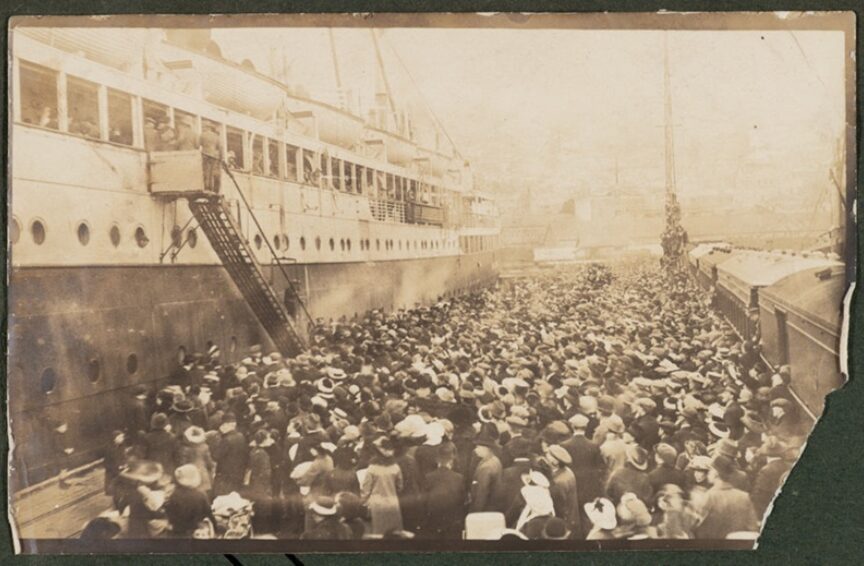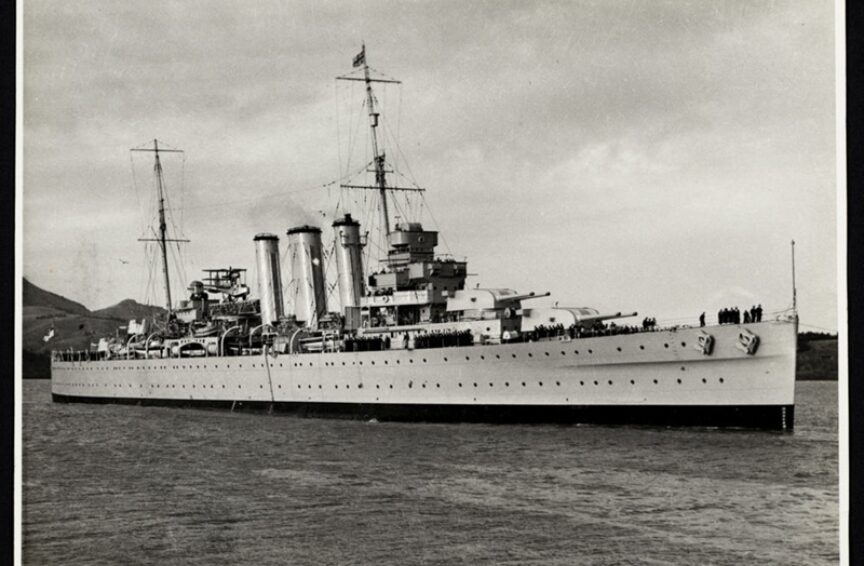PO Box 95
Lyttelton 8841
Te Ūaka recognises Te Hapū o Ngāti Wheke as Mana Whenua and Mana Moana for Te Whakaraupō / Lyttelton Harbour.
The Canterbury Division of the RNVR
The British Royal Naval Volunteer Reserve (RNVR) was instituted in 1903 and manned largely by members of the Royal Naval Artillery Volunteers as part of a modernisation of the British Commonwealth’s defence forces that included His Majesty Edward VII’s Colony of New Zealand. While the colony had always relied upon the Royal Navy’s Australasia Station and its largely British-born sailors for its primary naval defence, the Lyttelton Naval Artillery Volunteers had been formed in 1880 as part of a nationwide coast guard militia manning the gun emplacements that protected the Port of Lyttelton from the British Empire’s adversaries. With Edward VII’s modernisation efforts, the Lyttelton Naval Artillery Volunteers became the No. 1 Company Canterbury Division of the New Zealand Garrison Artillery Volunteers. On the disbanding of the British Royal Navy’s Australasia Station in 1913, the New Zealand Naval Forces were created as a Division of the Royal Navy under the command of its China Station. After WWI, the New Zealand Division of the British Royal Navy was formed in 1921, funded by the New Zealand government and increasingly crewed by New Zealand sailors. Five years later in 1926, the Royal Naval Volunteer Reserves were formed throughout New Zealand in support of their New Zealand Division. The Canterbury Division of the RNVR was composed of civilians from diverse backgrounds who shared a love of the sea and a willingness to serve the British Empire’s naval forces in times of war. Members included bank clerks, office workers, manual labourers and tradespeople, representing a broad cross section of New Zealand society. The RNVR's commitment to the Crown and readiness to undertake naval operations at short notice made them an essential component of New Zealand's Royal Navy defence force. In 1926, with the founding of local RNVR divisions, the New Zealand government purchased Her Majesty's Naval Trawler TR1 from the British Admiralty. Built in 1917 in Canada, this naval trawler had been on loan to the Royal Canadian Navy for use in WW1 minesweeping and anti-submarine operations. A 540 ton, 41 m long steam ship with a crew of 26, she was armed with one 4 inch (102 mm) gun and two Lewis machine guns along with depth charges. Renamed HMNZS Wakakura (literally ‘boat school’ in te reo Māori) she served as the nation’s main steamer training vessel for the RNVR and was a regular visitor to Whakaraupō Lyttelton Harbour. Throughout the 1930s, when in port, she provided the Canterbury Division RNVR sailors with naval experience in seamanship, gunnery and minesweeping. On the advent of WWII, after the sinking of RMS Niagara by German mines, the New Zealand government embarked on the construction of the Castle Class minesweepers based on the design of the Wakakura, which also joined the 28th Minesweeper Flotilla. The cutter Deveron was a permanent Lyttelton-based training complement to the HMNZS Wakakura. At 26 tons, 16 m in length, and of kauri construction, she was built around 1877 in Auckland where it traded from, before being sold to a Lyttelton fisherman in 1886. She took part in the cargo salvage of the iron barque May Queen, wrecked at Camp Bay in early 1888, and traded timber in Southland and Stewart Island through the 1890s. From the early 1900s she was popularly known as the ‘Peninsula cutter’ trading goods around the bays from Lyttelton to Akaroa for some 20 years under Captain Christian Andersen and his son. Bought at auction for the sum of £25 on 26 July 1929, she was outfitted with an auxiliary engine and commissioned on 16 December 1929 by Royal Navy Commodore of the New Zealand Division, Geoffrey Blake, as the sail training vessel of the Canterbury Division RNVR based at Rīpapa Island. The Deveron proved popular with the reservists who eagerly took her to sea almost every weekend through the early to mid 1930s. Canterbury Division RNVR crews also sailed her in yachting races such as the Banks Peninsula Cruising Club’s annual ocean race from the harbour heads out to Brighton pier and back. With longer training trips around the peninsula to Akaroa and south to Dunedin via Timaru – at times braving fierce gales – or north to the port of Kaiapoi, the young hands gained vital sailing experience that would serve them well when called up for WWII. By late 1936, however, the venerable Deveron was starting to show her near 60 years of age, with one wag suggesting “it is time that she was treated to about 10 gallons of petrol and a match”. Sold for £10 in December 1936 she was finally scrapped in early 1940. With the establishment of the Royal New Zealand Navy in 1941, the Dominion’s long association with the British Royal Navy was finally ended, and the RNVR became today’s Royal New Zealand Naval Volunteer Reserve (RNZNVR) with the Canterbury Headquarters based at HMNZS Pegasus. See also ‘Leading Signalman Pat Luxton – Oral History’ at https://rnzncomms.org/luxton-2-2/ |

